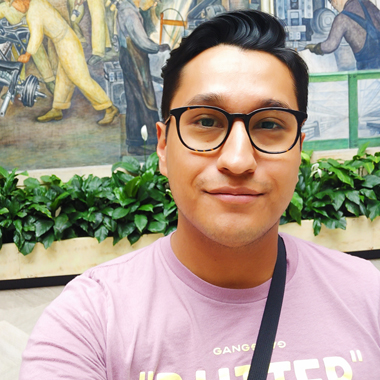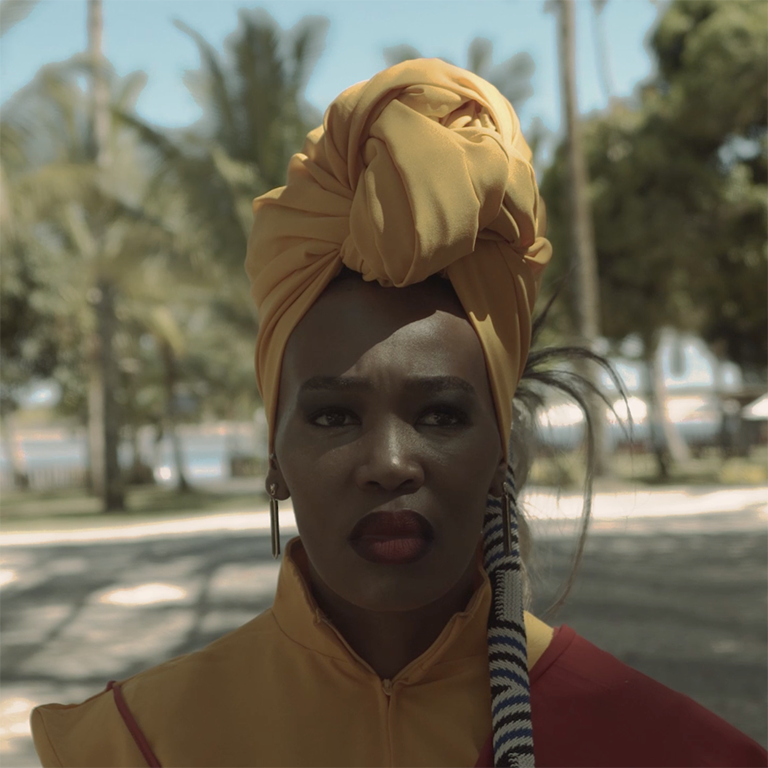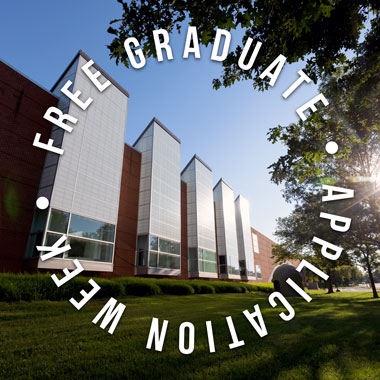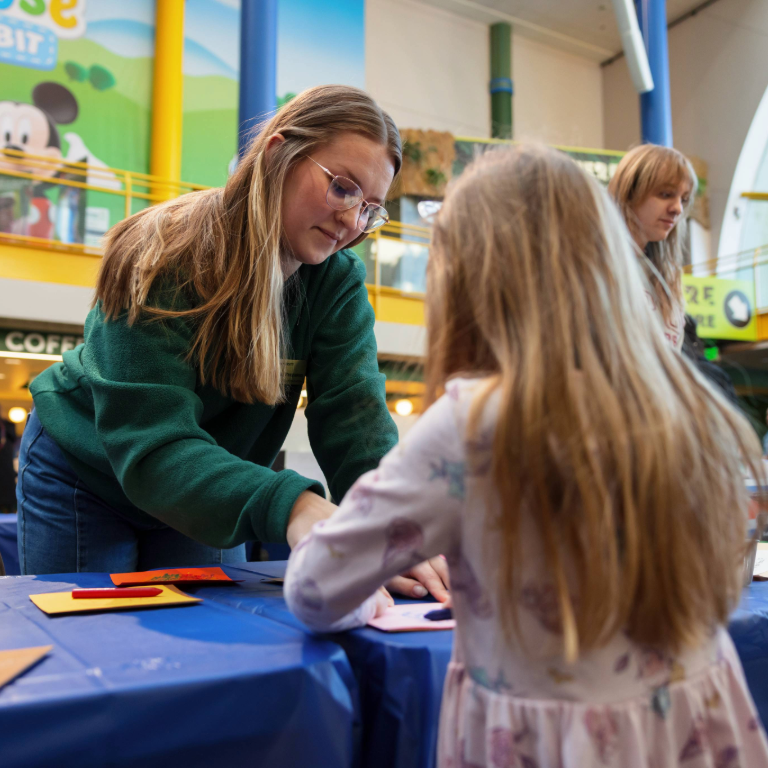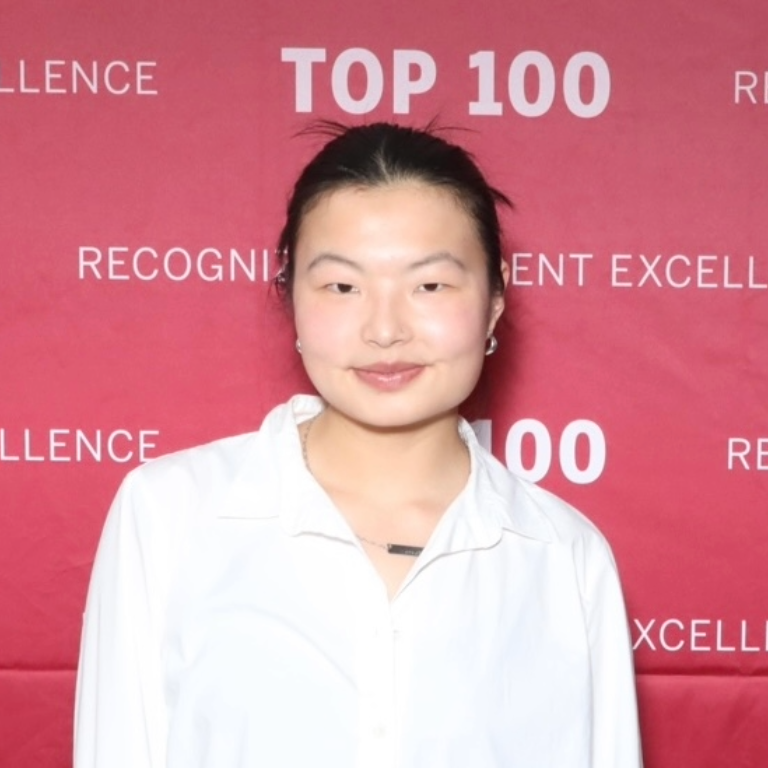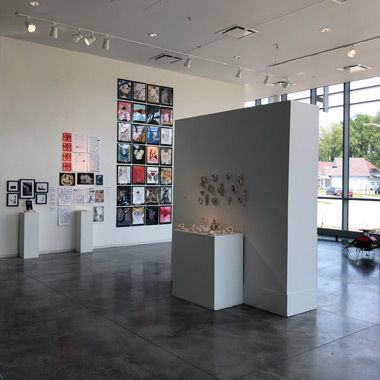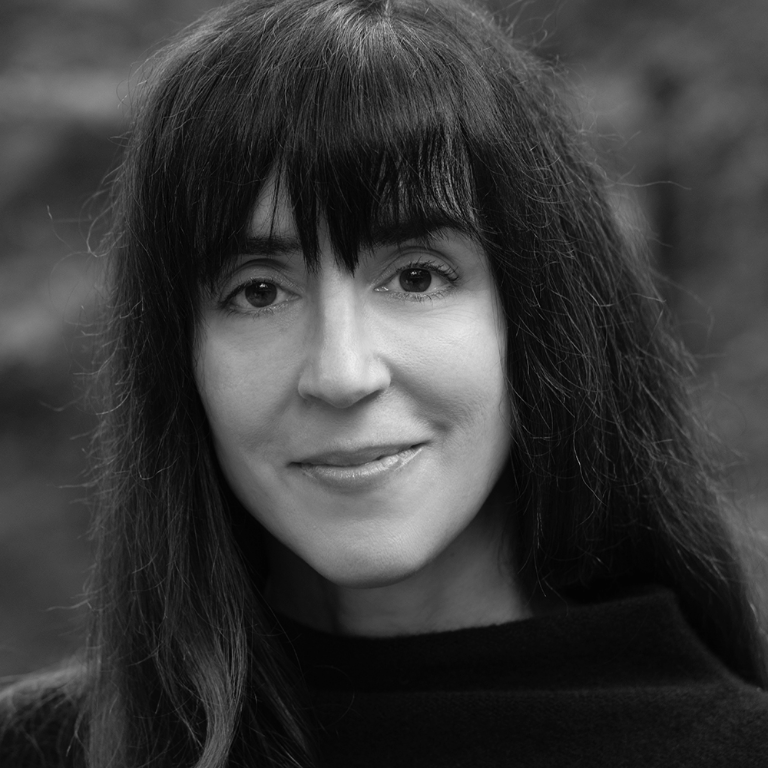Elias Garza Garcia (B.A. Art History '20) is a Latinx graduate with a certificate in museum studies who has recently joined the Herron Galleries as Gallery Manager.
Garza Garcia was born in Tamaulipas, Mexico, and moved to Indiana at the age of eight. His heritage and background have influenced his curiosity and research interests significantly, particularly as a passion for promoting the inclusion of diverse voices and artistic perspectives.
Garza Garcia worked as a curatorial assistant at the Eiteljorg Museum in downtown Indianapolis before joining Herron's team. During his studies, he worked part-time in various roles at the Indiana Historical Society. As a result of these experiences, he gained a thorough understanding of the challenges that cultural institutions face in terms of representation and access, which inspired him to become a change agent.
Let's dig into Garza Garcia's research interests and how he plans to make a difference in the world of art and culture.
HERRON: You began your college career at Ivy Tech with the intention of becoming an art teacher, but then transferred to Herron to study art history. What drew you to this field of study and professional practice?
ELIAS GARZA GARCIA: I am very interested in the lives of artists, their creative impulses, and how art itself can provoke and inspire others. I see how much art has influenced my life and benefited my well-being. At some point, I wanted to become an art teacher. Even though I did not seek the traditional route to teaching, I still feel a big responsibility to educate and continue learning, whether that is in a museum or gallery setting.
HERRON: How did you get your start in galleries and museums?
GARZA GARCIA: Before coming to Herron, I had some experience organizing art exhibits and working in smaller galleries in Tippecanoe and Clinton counties. I also did a lot of printmaking myself and exhibited my artwork in several small art galleries. Then, during my senior year at Herron, I had a wonderful opportunity to work as an intern to the former curator of contemporary art at the Eiteljorg Museum, Jennifer Compolo McNutt. My internship rolled into a full-time position as curatorial assistant which I held for two years.
Working with Indigenous artists and art expanded my view of what art can be, and the job itself allowed me to see the innerworkings of a museum: the challenges, the politics, and the exciting opportunities. Working in the Herron Galleries was a natural step for me. Since I started, there has not been a slow day. I get to move a lot, handle artwork, and work with artists and students.
HERRON: What do you enjoy most about looking at the world through your distinct art historical lens? And how has it supported your work as a curatorial assistant and, more recently, gallery manager?
GARZA GARCIA: Art history, the way it is taught, can be one of the strongest colonial mechanisms of suppression. If you are aware of this, you can find the gaps and use your knowledge to bring visibility to subjects, history, and artists rarely represented or visible in the art world. I feel strongly that art is for all, and it's important to build spaces of belonging and reflection. Exclusion is not an option.
One of my endeavors while working at the Eiteljorg Museum was expanding the notion of what "Western" art is. If the West is a place or an idea, what are its defining features? Because the West is so diverse, there is no singular ideology or narrative; it is more than just white cowboys and Indigenous peoples. I think people will be shocked at the amazing strides the museum is taking to diversify its collection and exhibits. It is very exciting.
HERRON: As a young Latinx professional, you've also worked to make the Indianapolis arts scene more equitable and accessible and have often highlighted the work of artists from underrepresented groups. What would you like to see cultural institutions do to be more inclusive and encouraging of intersectionality?
GARZA GARCIA: I think all institutions need to look at their history. Who are they representing and funding? We also need to look at our staff and boards. Who are the people in charge of making decisions? There is this fad for diversity happening all around us, and many institutions are invested on a superficial level. I would love to see cultural institutions build genuine relationships with local communities and cater to their needs. I would also like to see diversity treated with nuance and care and not just a quota that we all have to meet.
HERRON: During your undergraduate studies, you wrote a paper about the history of Día de Los Muertos in museums and the possibilities for healing, teaching, and building empathy that the tradition and holiday experience can offer visitors. Tell us a little bit more about this project.
GARZA GARCIA: Día de Muertos takes place on November 1 and 2. It is a time when we can celebrate and honor those who are no longer with us. The holiday has its roots in pre-colonial indigenous cultures and continues to be observed all over the U.S., Mexico, and many other countries in Central and South America. One of the iconic elements of this holiday is the ofrendas or altars, which are meticulously decorated with objects, flowers, and food. Many museums around the U.S. open their doors to Latinx communities to share the holiday with their visitors, making these celebrations one of the most visited events for museums each year.
My research focused on the power of ofrendas as healing spaces. It was an especially poignant topic when I wrote it. Amidst the global COVID-19 pandemic, many Latinx communities lost family and friends who were considered essential workers. Unable to hold funerals or proper burials in some cases, public ofrendas offered solace and communal support during a time of isolation for many of us.
HERRON: You assisted the Eiteljorg Museum with "Shifting Boundaries," an exhibition of works by five Native American and First Nations chosen for the 2021 Eiteljorg Contemporary Art Fellowship. What was the most rewarding aspect of your experience?
GARZA GARCIA: One of the most rewarding things about working on the 2021 Eiteljorg Contemporary Art Fellowship was getting to know the artists. They were a fabulous cohort, extremely talented, passionate, and generous. I don't think I had ever worked with art so intimately in a way that I understood it in its entirety.
You also don't realize this when you are working on it, but the fellowship is one of the most internationally renowned programs amongst the Native arts community. It was a treat to be surrounded by artists, writers, and curators whom I really admired.
HERRON: What topics or themes are you currently researching?
GARZA GARCIA: I continue to research Latinx and Indigenous art and artists of intersectional and diasporic backgrounds. I am very interested in artists working in textile and sculpture right now, anything that is unconventional. I think it's because I grew up with a mother who was always sewing and making clothes for me. I must find it comforting.
In the near future, I would love to curate an exhibition around the cowboy and how artists are using this archetype to examine their own masculinity and gender performance.
HERRON: Where do you go for inspiration when you're not at Herron?
GARZA GARCIA: I love spending time with family and friends. They are my greatest source of inspiration. It's important to surround yourself with people who value and support you. I also like traveling and visiting places I have never been to before. It always helps to come back home with a renewed spirit and a fresh set of eyes.
HERRON: What is the best piece of professional advice you've ever received that you would share with incoming students interested in doing similar work?
GARZA GARCIA: Learn to be a good negotiator, and have a clear distinction between your work and personal life.
Follow Elias Garza Garcia's activities via Instagram and LinkedIn.


